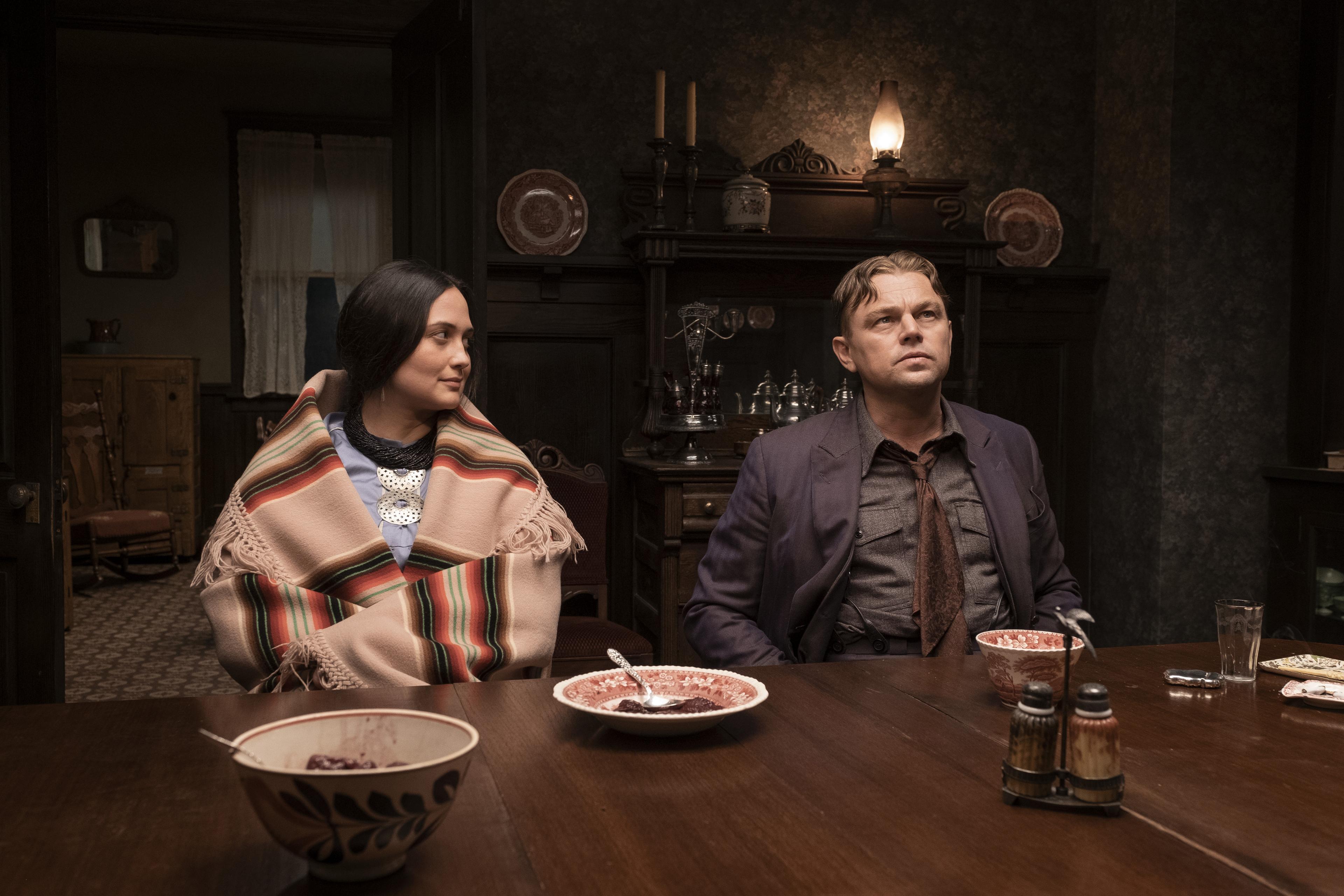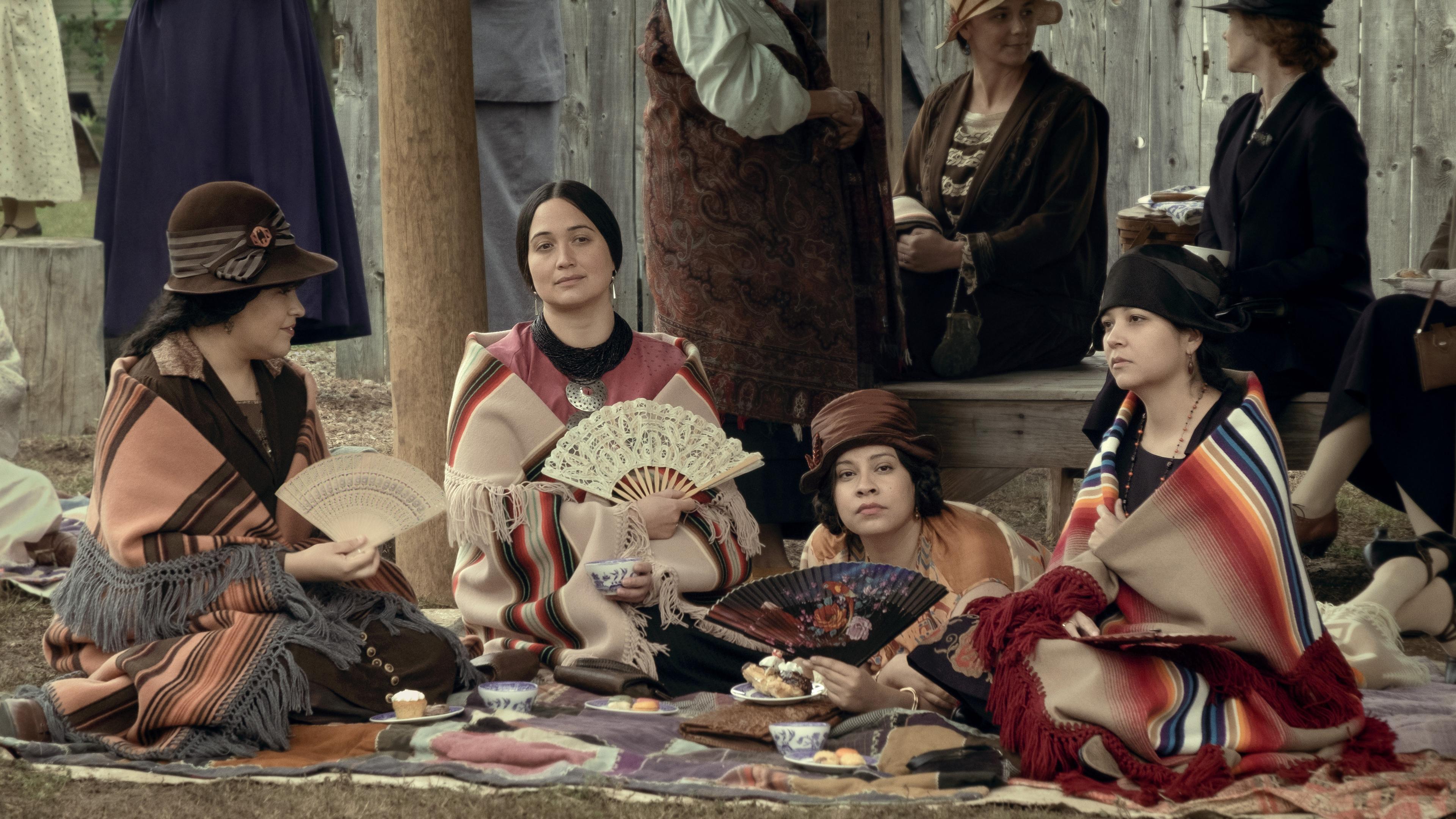INSP editor Tony Inglis: “Martin Scorsese’s new film shows co-creation alongside people with lived experience can change the narrative”

Lily Gladstone and Leonardo DiCaprio in Killers of the Flower Moon. Courtesy of Apple TV+
By Tony Inglis
- Journalism is not a crime
For his new film Killers of the Flower Moon, which recently premiered at the Cannes Film Festival, director Martin Scorsese, and his cast and crew, worked with members of the Osage tribe – the Native American community at the centre of the true story he was dramatising – to ensure his sweeping epic of a film honestly depicted their experiences. In his latest column, INSP editor Tony Inglis explains how Scorsese’s approach of instigating a co-creational model, and platforming people with lived experience of the events of the story, is not unlike how street papers approach journalism.
When auteur film director Martin Scorsese premiered his latest film at the Cannes Film Festival earlier this year, it became just another in a long line of acclaimed works by the 80-year-old filmmaker, stretching from his 1973 artistic breakthrough Mean Streets to the longform tale of crime and corruption that was 2019’s The Irishman.
Based on the book of the same name by journalist David Grann, it’s a story about a series of murders inflicted upon the Osage nation, a Native American community that had struck gold through the discovery of oil on their land, at the hands of white perpetrators. The investigation into the plot was carried out by a fledgling FBI, with the book detailing the rise of the bureau. With avarice and violence at the centre of the true story, it is one ripe for Scorsese’s take, as so much of his oeuvre has focused on these themes.
The film should prove to be yet another directorial feat, but it is Scorsese’s refreshing approach to adapting the source material that seems groundbreaking. Originally a straight adaptation of the book concentrating on predominantly white law enforcement, Scorsese chose to move away from a white saviour narrative and focus his lens on the Osage people. A story about the FBI swooping in to unearth the culprits of these horrific crimes, became a more emotional meditation on community and the way it can be broken by the horror of white supremacy and capitalism.

It’s admirable that an octogenarian filmmaker like Scorsese should shift his artistic approach in such a way that the narrative would so drastically change. He recognised that this would make picking apart the trauma at the centre of the story more honest and powerful.
“After a certain point, I realized I was making a movie about all the white guys,” Scorsese said in an interview with Time magazine. “Meaning I was taking the approach from the outside in, which concerned me.”
In an interview with GQ, talking about who ultimately was involved with perpetrating these crimes, Scorsese said: “What I sensed was, it just wasn’t one or two people. I sensed it was everybody. And I said, ‘Well, if it’s everybody, then it’s us too.’ In other words, we, as Americans, we are complicit.”
The main influence of this pivot came thanks to Scorsese’s direct engagement with descendants of those Osage tribe members with lived experience of the events. The script, and the emphasis on character and perspective were dramatically altered by their involvement.
In an interview at the movie’s premiere, Osage leader Chief Standing Bear remarked: “I asked Mr. Scorsese, ‘how are you going to approach the story?’ He said, ‘I’m going to tell a story about trust, between the outside world and the Osage and a betrayal of those trusts, deep betrayal’. My people suffered greatly, and to this very day, those effects are with us. But I can say on behalf of the Osage, Martin Scorsese and his team have restored trust, and we know that trust will not be betrayed.”
Former Chief Jim Gray commented on Twitter about the ways in which this co-creational, collaborative approach to the making of Killers of the Flower Moon worked. He wrote: “The dignity and care for the Osage perspective was genuine and honest throughout the process and the Osage responded with the kind of passion and enthusiasm that met this historic moment.”

JaNae Collins, Lily Gladstone, Cara Jade Myers and Jillian Dion in Killers of the Flower Moon. Courtesy of Apple TV+
In an industry rife with inaccurate and offensive depictions of Native American and other Indigenous communities, it is notable that a story that so deeply marked one tribe’s history should have them be central in its telling. It’s admirable that an octogenarian filmmaker like Scorsese should shift his artistic approach in such a way that the narrative would so drastically change. He recognised that this would make picking apart the trauma at the centre of the story more honest and powerful.
It’s a lesson that people in other storytelling industries could learn from. In journalism, the lack of lived experience perspective in reporting can leave huge gaps in understanding. However, street papers approach their journalistic work with a similar method to the way in which Scorsese’s new production approached the making of the film: empowering and employing writers with direct experiences of the issues being narrativised, or at least ensuring their voice is platformed within the stories about them. This is specifically true of Indigenous voices, who make up key reporting positions, are deciding street paper news agendas, and are the focal point of projects of which they are the expert voice in North America. It makes for work with an inherent truth and is evidence that, no matter how engrained a way of working is, no one is too set in their ways to make an inclusive change.
Support our News Service
We believe journalism can change lives, perceptions, and society - underpinning democracy for a more equitable world. Learn more about the INSP News Service and how to support it here.
You may also be interested in...

INSP editor Tony Inglis: “If football cut out corporate greed, it could learn something from the solidarity of the street paper network”
Read more
INSP North America director: “Street papers believe in the idea that journalism can bring people together to make the world we live in a better place”
Read more